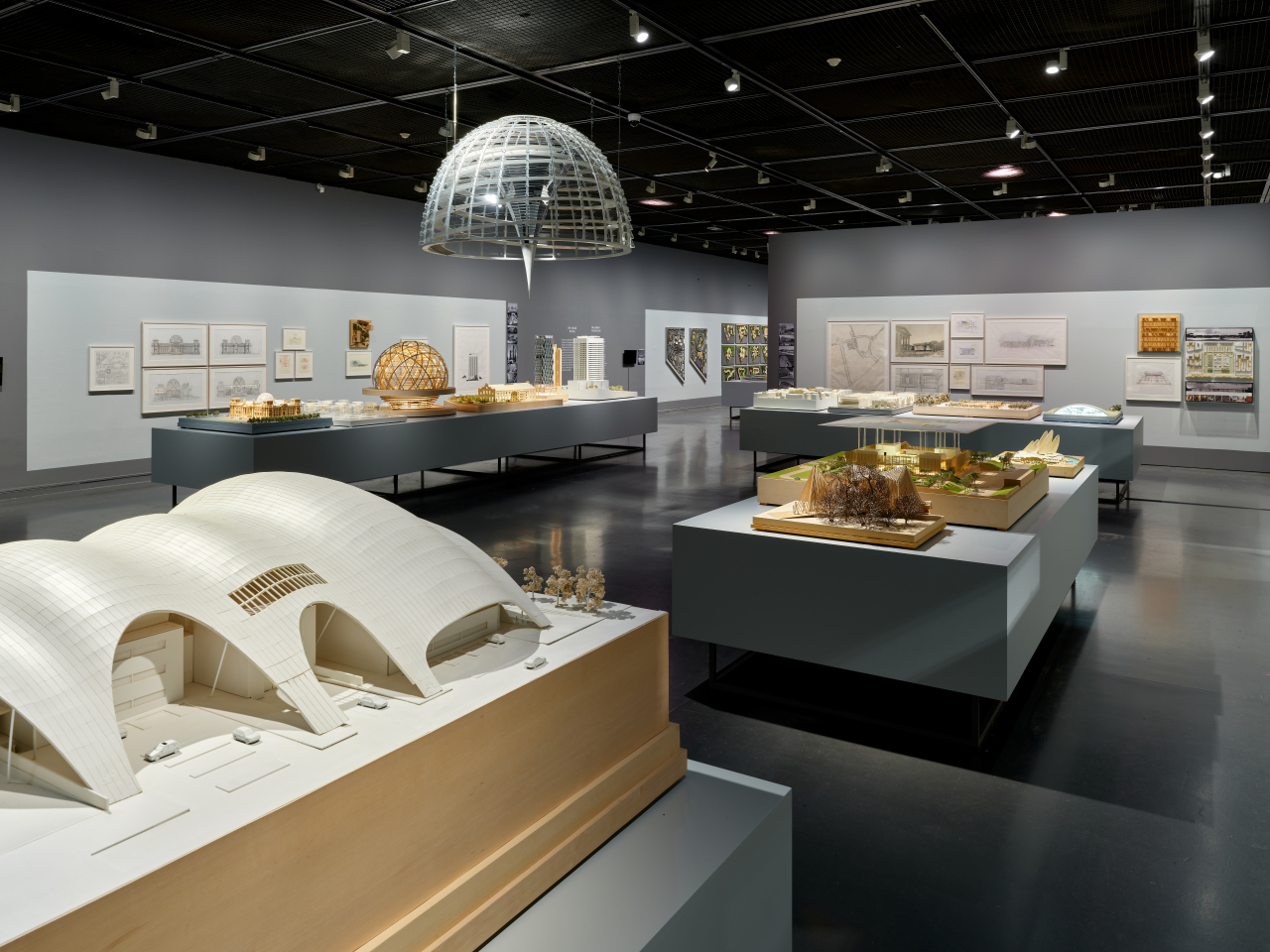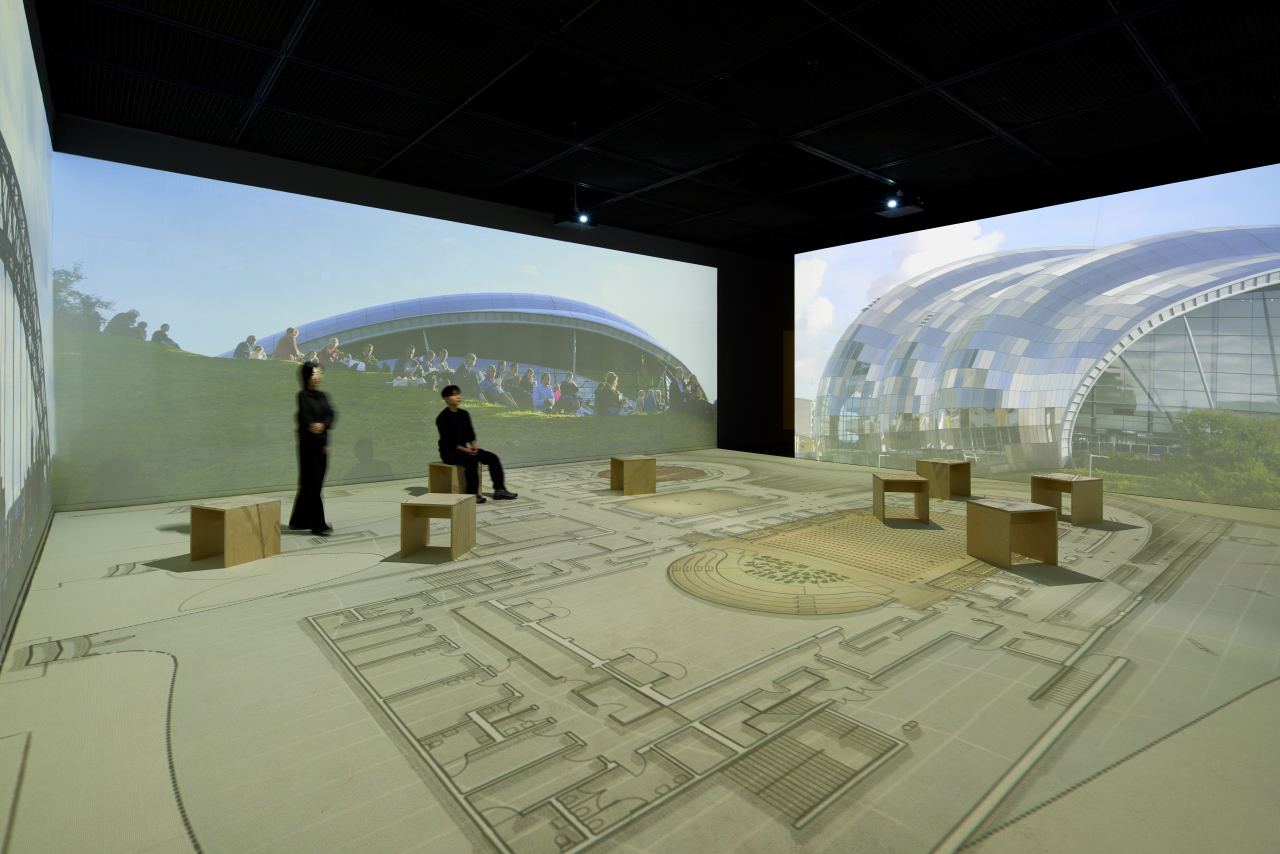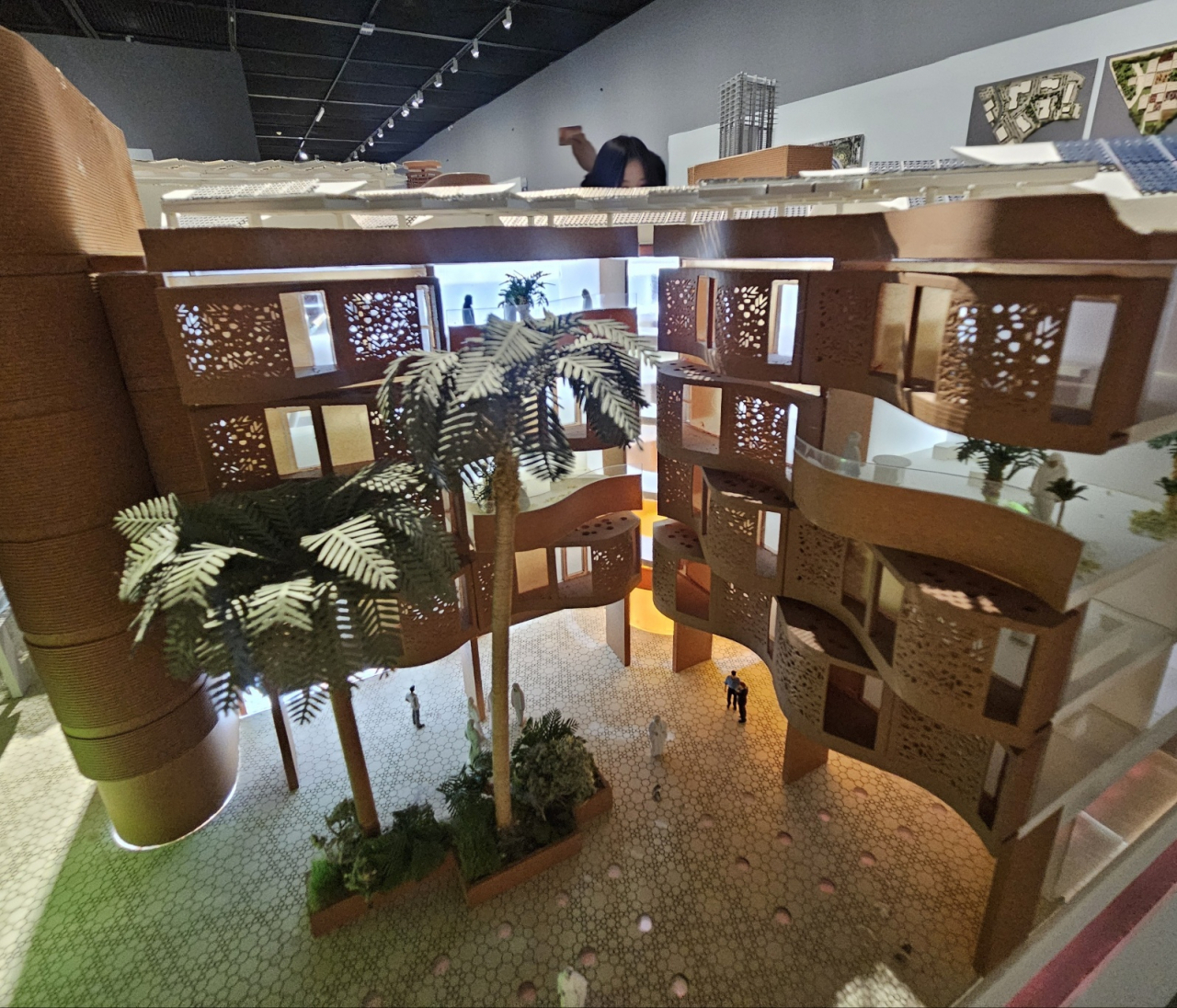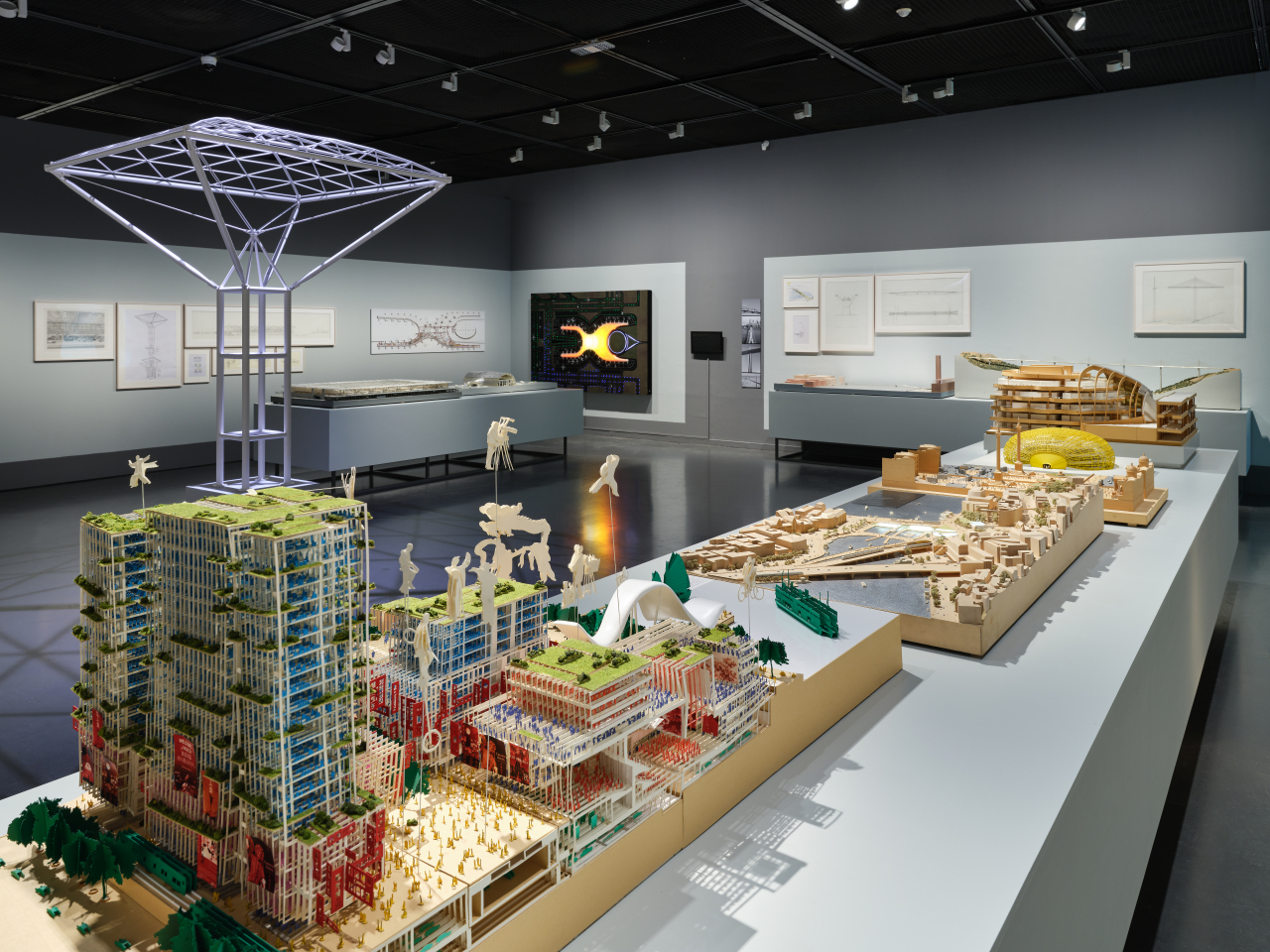 |
An installation view of “Future Positive: Norman Foster, Foster + Partners” at Seoul Museum of Art (Courtesy of the museum) |
Pritzker Prize-winning English architect Norman Foster is one of the leading figures in architecture of the past few decades. Those who are familiar with modern architectural landmarks such as the HSBC Building in Hong Kong would also be familiar with his practice's work innovating architecture with technology.
The largest exhibition of Foster's works in Asia currently being held in Seoul is focused on his team’s commitment to sustainability, a goal that has been at the heart of their design approach, according to Foster + Partners. The architecture studio focuses on 10 themes related to sustainability in architecture: well-being, community impact, energy and carbon, resources and circular economy, social equity and feedback, among others.
Centering on such themes, the exhibition, “Future Positive: Norman Foster, Foster + Partners,” at Seoul Museum of Art -- which kicked off on April 25 -- highlights 50 of the firm's projects around the world, featuring models, drawings, archives and film.
 |
An installation view of “Future Positive: Norman Foster, Foster + Partners” at Seoul Museum of Art (Courtesy of the museum) |
“I am truly excited by the prospect of a major exhibition for the first time in Korea. I was impressed by my first visit to Seoul nearly 30 years ago. Last year, on our last visit, much had changed, but we were deeply impressed by the city and its cultural life. We were honored by the invitation to present a show of our work at SeMA,” Foster said in press material released by the museum.
Among the work on display is a model for “The Masdar Institute” in Masdar City in Abu Dhabi, which pursues a net-zero energy city, running entirely on renewable energy and encouraging a vehicle-free environment at the street level. The Masdar Institute is the first part of the city’s master plan to create an educational focus for the entire program. The building is powered entirely by renewable solar energy.
“It was really experimenting with zero waste and zero carbon, trying to use vernacular ideas with narrow streets, low buildings and deep set windows,” said Katy Harris, head of communications at Foster + Partners, during a press tour on April 24.
 |
A model of "The Masdar Institute" in Abu Dhabi is on display at the exhibition, “Future Positive: Norman Foster, Foster + Partners,” at Seoul Museum of Art. (Park Yuna/The Korea Herald) |
The exhibition explores five themes that have guided the work of the architect and his studio: “Introduction of Sustainability,” “Culture + Retrofit,” “Wellbeing + Technology,” “Public + Placemaking” and “Future.”
The last part of the exhibition, “Future,” introduces “The Lunar Habitation Project” and “The Mars Habitat Project,” collaborations with the European Space Agency and the National Aeronautics and Space Administration to imagine life on other planets, launched a decade ago. These projects sought innovative solutions to challenges such as inefficiencies in transporting construction materials from Earth by sourcing locally from Mars instead.
In Korea, Foster + Partners have completed Hankook Technoplex in Pangyo, Gyeonggi Province, Hankook Technodome in Daejeon and Apple Myeongdong in Seoul, among others.
 |
An installation view of “Future Positive: Norman Foster, Foster + Partners” at Seoul Museum of Art (Courtesy of the museum) |
Born in 1935 in Manchester, England, Foster studied architecture and urban planning at the University of Manchester before earning his master’s degree from the Yale School of Architecture. Foster + Partners, founded by the architect in 1967, has worked on more than 500 projects globally.
The exhibition, co-curated by the museum and Foster + Partners, runs through July 21. The museum's Seosomun Main Branch is closed on Mondays.







